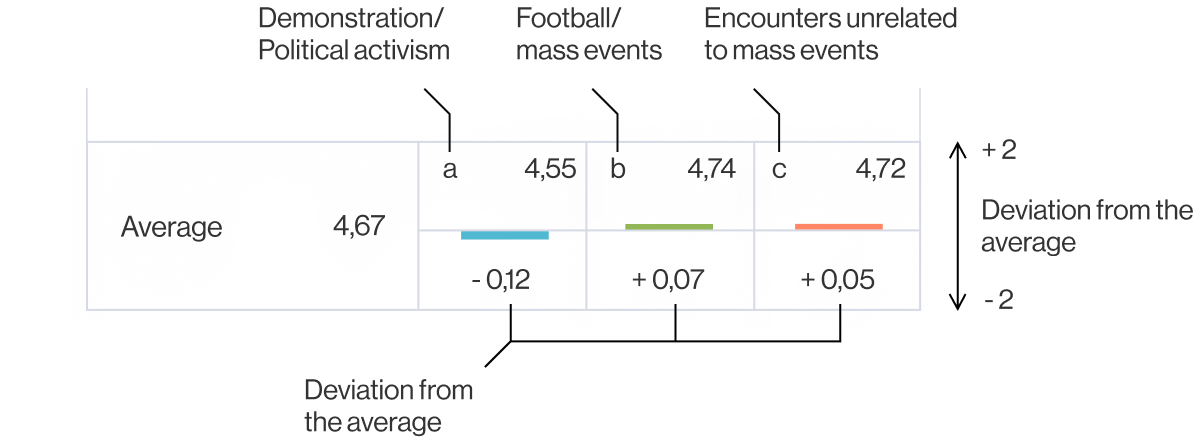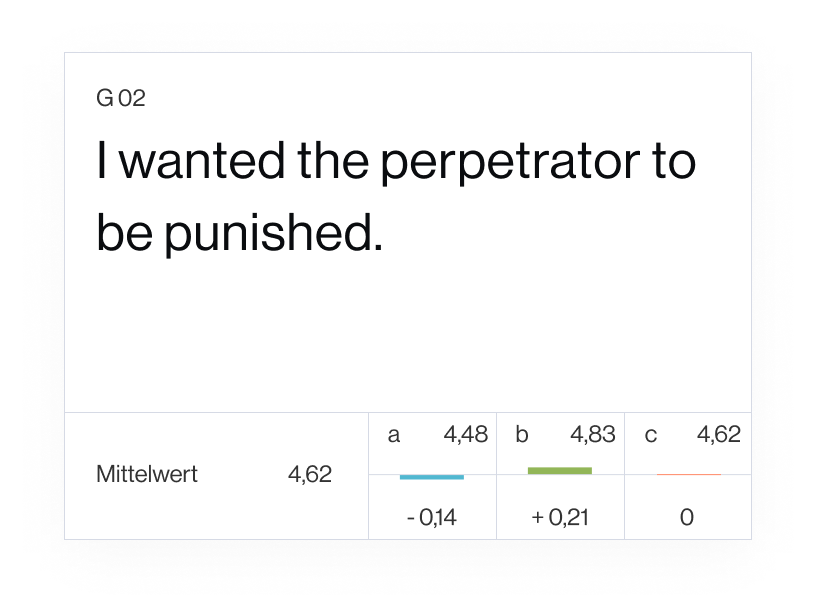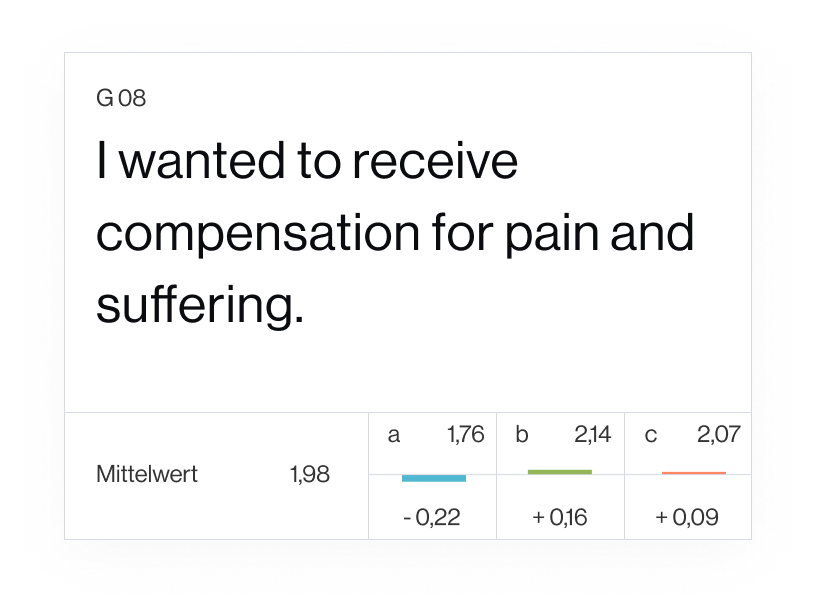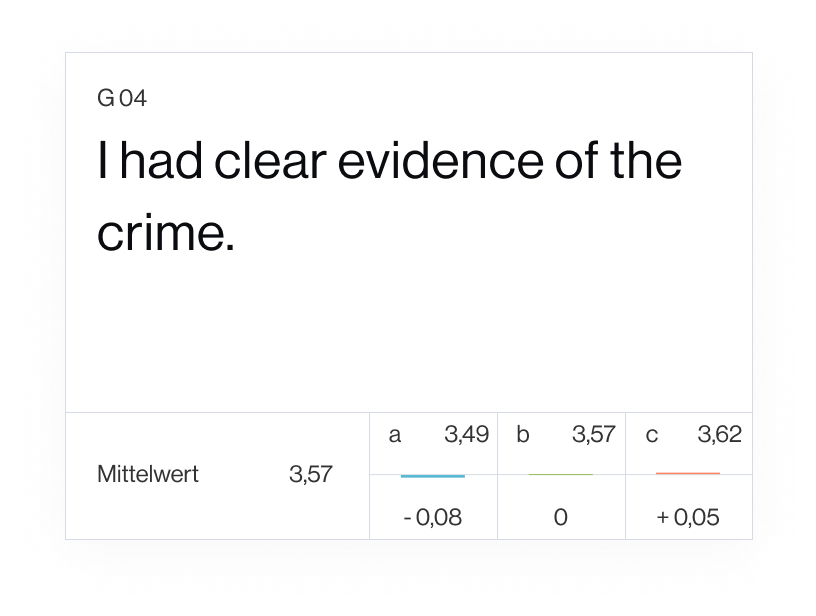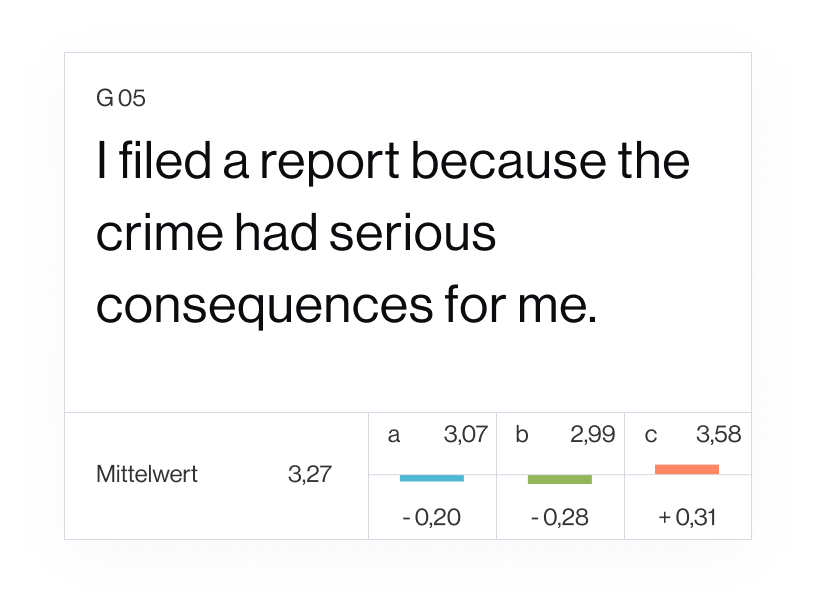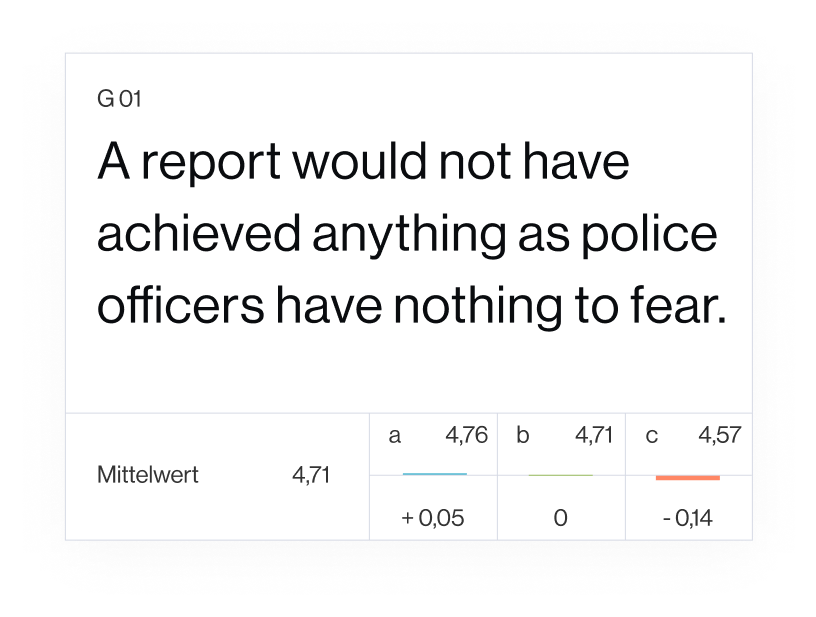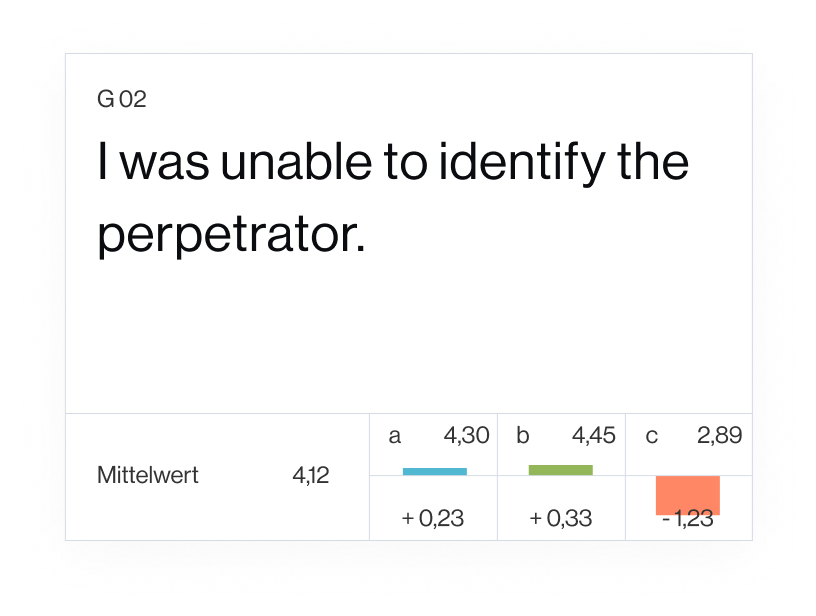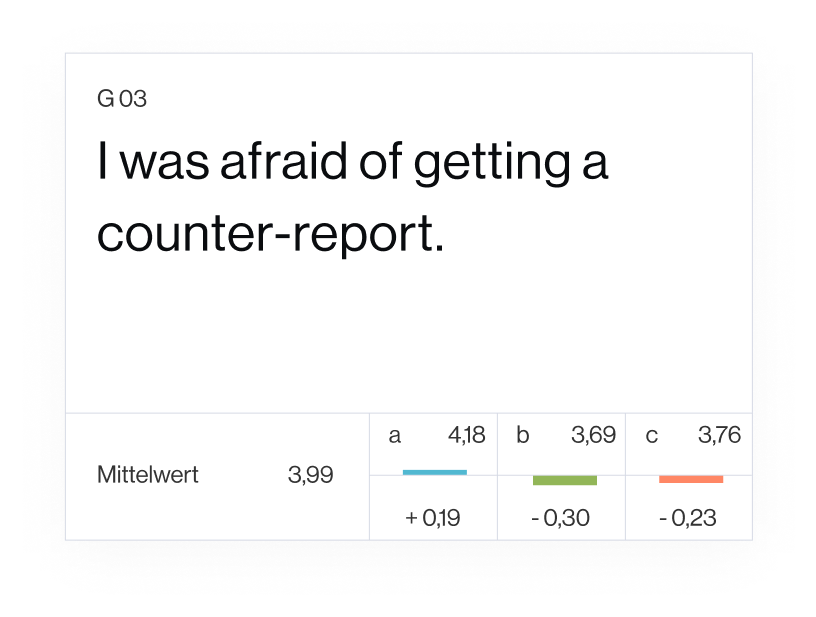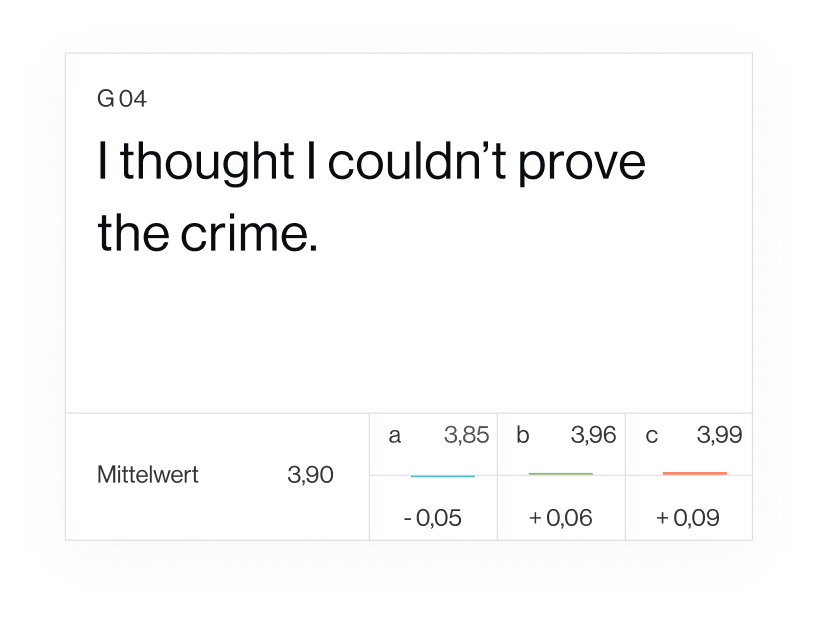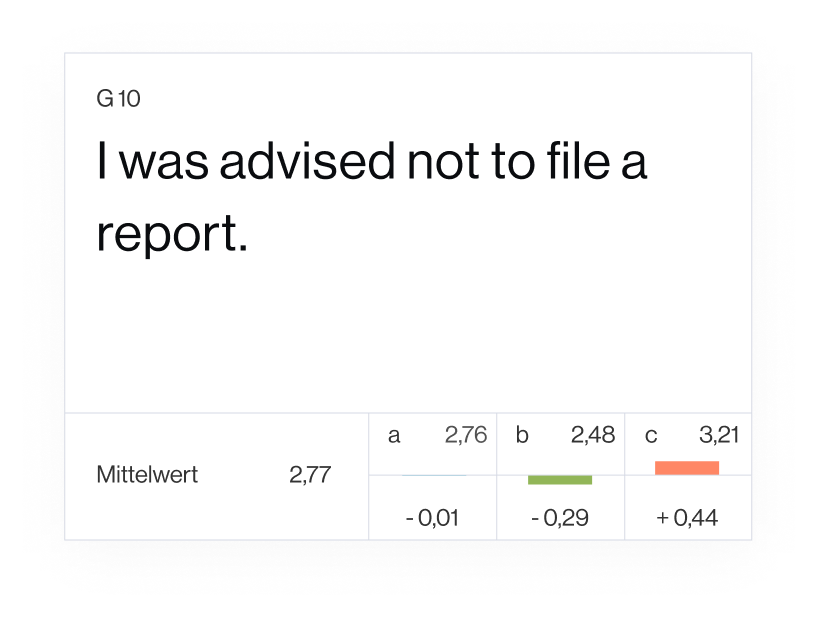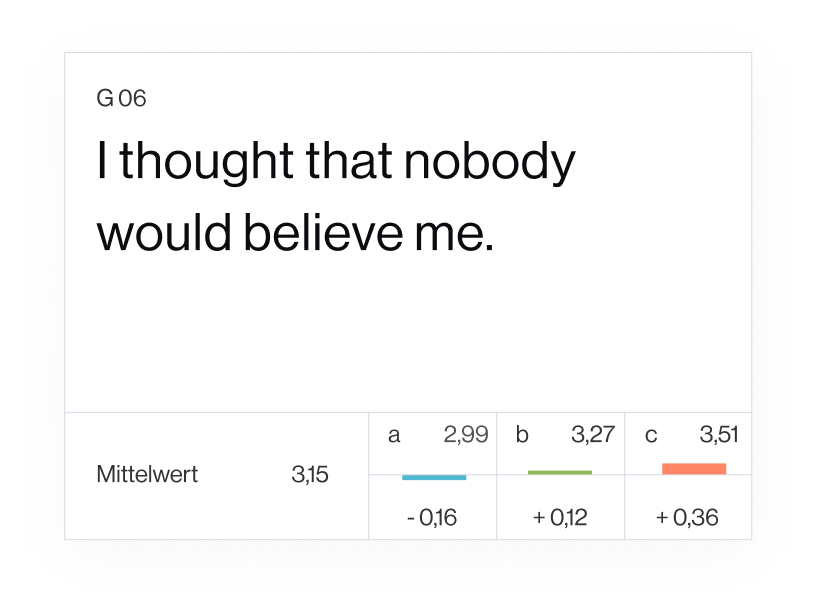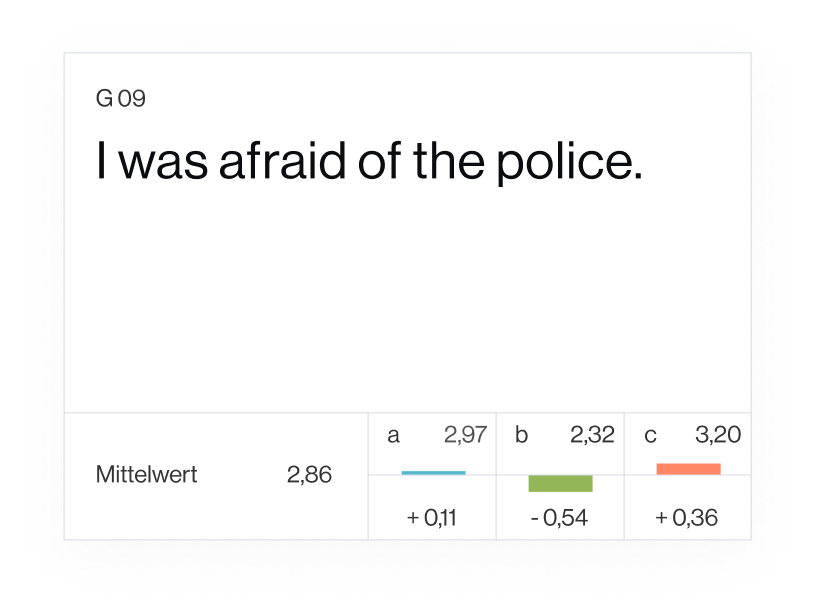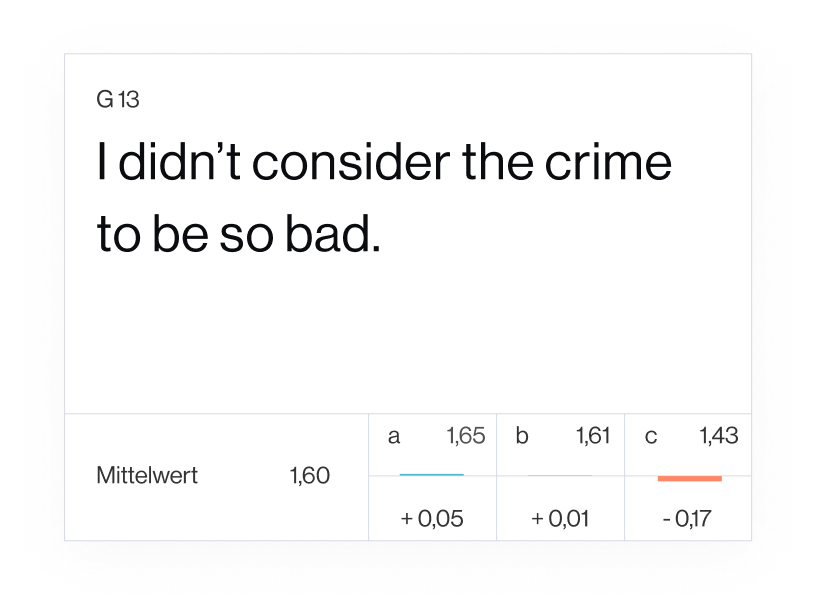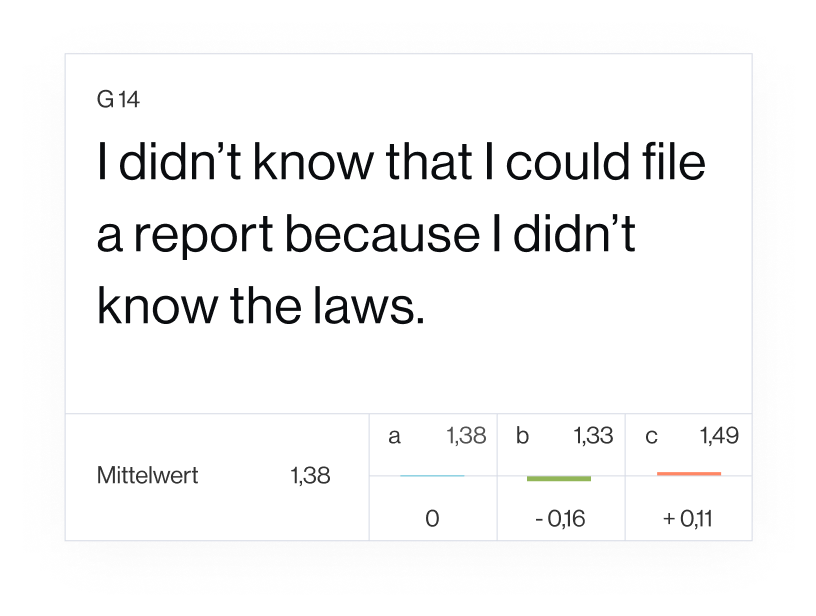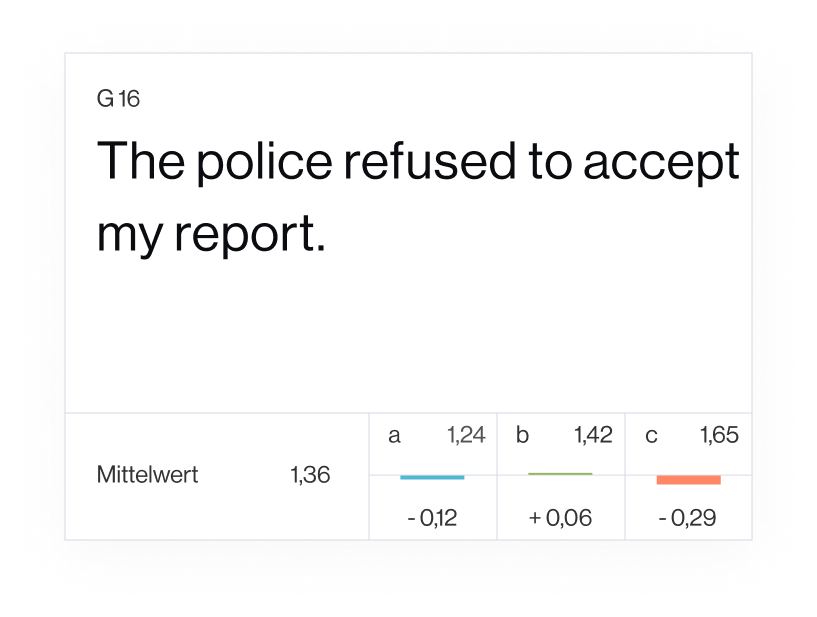This Website is my Bachelor Thesis in Communication Design at the University of Applied Sciences. With permission of the research project KviAPol I visualised parts from their interim report and combined them with inputs I researched myself (like the introduction or the glossary).
Imprint (in German)
Angaben gemäß § 5 TMG
Daria Babco
Schwetzinger Strasse 65
69190 Walldorf
Vertreten durch
Daria Babco
Kontakt
Website: dariababco.de
E-Mail: hi@dariababco.de
Verantwortlich für den Inhalt nach § 55 Abs. 2 RStV
Daria Babco
Schwetzinger Strasse 65
69190 Walldorf
Daria Babco
Schwetzinger Strasse 65
69190 Walldorf
Vertreten durch
Daria Babco
Kontakt
Website: dariababco.de
E-Mail: hi@dariababco.de
Verantwortlich für den Inhalt nach § 55 Abs. 2 RStV
Daria Babco
Schwetzinger Strasse 65
69190 Walldorf
Haftungsausschluss
Haftung für Inhalte Die Inhalte unserer Seiten wurden mit größter Sorgfalt erstellt. Für die Richtigkeit, Vollständigkeit und Aktualität der Inhalte können wir jedoch keine Gewähr übernehmen. Als Diensteanbieter sind wir gemäß § 7 Abs.1 TMG für eigene Inhalte auf diesen Seiten nach den allgemeinen Gesetzen verantwortlich. Nach §§ 8 bis 10 TMG sind wir als Diensteanbieter jedoch nicht verpflichtet, übermittelte oder gespeicherte fremde Informationen zu überwachen oder nach Umständen zu forschen, die auf eine rechtswidrige Tätigkeit hinweisen. Verpflichtungen zur Entfernung oder Sperrung der Nutzung von Informationen nach den allgemeinen Gesetzen bleiben hiervon unberührt. Eine diesbezügliche Haftung ist jedoch erst ab dem Zeitpunkt der Kenntnis einer konkreten Rechtsverletzung möglich. Bei Bekanntwerden von entsprechenden Rechtsverletzungen werden wir diese Inhalte umgehend entfernen.
Haftung für Links Unser Angebot enthält Links zu externen Webseiten Dritter, auf deren Inhalte wir keinen Einfluss haben. Deshalb können wir für diese fremden Inhalte auch keine Gewähr übernehmen. Für die Inhalte der verlinkten Seiten ist stets der jeweilige Anbieter oder Betreiber der Seiten verantwortlich. Die verlinkten Seiten wurden zum Zeitpunkt der Verlinkung auf mögliche Rechtsverstöße überprüft. Rechtswidrige Inhalte waren zum Zeitpunkt der Verlinkung nicht erkennbar. Eine permanente inhaltliche Kontrolle der verlinkten Seiten ist jedoch ohne konkrete Anhaltspunkte einer Rechtsverletzung nicht zumutbar. Bei Bekanntwerden von Rechtsverletzungen werden wir derartige Links umgehend entfernen.
Urheberrecht Die durch die Seitenbetreiber erstellten Inhalte und Werke auf diesen Seiten unterliegen dem deutschen Urheberrecht. Die Vervielfältigung, Bearbeitung, Verbreitung und jede Art der Verwertung außerhalb der Grenzen des Urheberrechtes bedürfen der schriftlichen Zustimmung des jeweiligen Autors bzw. Erstellers. Downloads und Kopien dieser Seite sind nur für den privaten, nicht kommerziellen Gebrauch gestattet. Soweit die Inhalte auf dieser Seite nicht vom Betreiber erstellt wurden, werden die Urheberrechte Dritter beachtet. Insbesondere werden Inhalte Dritter als solche gekennzeichnet. Sollten Sie trotzdem auf eine Urheberrechtsverletzung aufmerksam werden, bitten wir um einen entsprechenden Hinweis. Bei Bekanntwerden von Rechtsverletzungen werden wir derartige Inhalte umgehend entfernen.
Datenschutz Die Nutzung unserer Webseite ist in der Regel ohne Angabe personenbezogener Daten möglich. Soweit auf unseren Seiten personenbezogene Daten (beispielsweise Name, Anschrift oder eMail-Adressen) erhoben werden, erfolgt dies, soweit möglich, stets auf freiwilliger Basis. Diese Daten werden ohne Ihre ausdrückliche Zustimmung nicht an Dritte weitergegeben.
Wir weisen darauf hin, dass die Datenübertragung im Internet (z.B. bei der Kommunikation per E-Mail) Sicherheitslücken aufweisen kann. Ein lückenloser Schutz der Daten vor dem Zugriff durch Dritte ist nicht möglich.
Der Nutzung von im Rahmen der Impressumspflicht veröffentlichten Kontaktdaten durch Dritte zur Übersendung von nicht ausdrücklich angeforderter Werbung und Informationsmaterialien wird hiermit ausdrücklich widersprochen. Die Betreiber der Seiten behalten sich ausdrücklich rechtliche Schritte im Falle der unverlangten Zusendung von Werbeinformationen, etwa durch Spam-Mails, vor.
Wir weisen darauf hin, dass die Datenübertragung im Internet (z.B. bei der Kommunikation per E-Mail) Sicherheitslücken aufweisen kann. Ein lückenloser Schutz der Daten vor dem Zugriff durch Dritte ist nicht möglich.
Der Nutzung von im Rahmen der Impressumspflicht veröffentlichten Kontaktdaten durch Dritte zur Übersendung von nicht ausdrücklich angeforderter Werbung und Informationsmaterialien wird hiermit ausdrücklich widersprochen. Die Betreiber der Seiten behalten sich ausdrücklich rechtliche Schritte im Falle der unverlangten Zusendung von Werbeinformationen, etwa durch Spam-Mails, vor.
Google Analytics Diese Website benutzt Google Analytics, einen Webanalysedienst der Google Inc. (''Google''). Google Analytics verwendet sog. ''Cookies'', Textdateien, die auf Ihrem Computer gespeichert werden und die eine Analyse der Benutzung der Website durch Sie ermöglicht. Die durch den Cookie erzeugten Informationen über Ihre Benutzung dieser Website (einschließlich Ihrer IP-Adresse) wird an einen Server von Google in den USA übertragen und dort gespeichert. Google wird diese Informationen benutzen, um Ihre Nutzung der Website auszuwerten, um Reports über die Websiteaktivitäten für die Websitebetreiber zusammenzustellen und um weitere mit der Websitenutzung und der Internetnutzung verbundene Dienstleistungen zu erbringen. Auch wird Google diese Informationen gegebenenfalls an Dritte übertragen, sofern dies gesetzlich vorgeschrieben oder soweit Dritte diese Daten im Auftrag von Google verarbeiten. Google wird in keinem Fall Ihre IP-Adresse mit anderen Daten der Google in Verbindung bringen. Sie können die Installation der Cookies durch eine entsprechende Einstellung Ihrer Browser Software verhindern; wir weisen Sie jedoch darauf hin, dass Sie in diesem Fall gegebenenfalls nicht sämtliche Funktionen dieser Website voll umfänglich nutzen können. Durch die Nutzung dieser Website erklären Sie sich mit der Bearbeitung der über Sie erhobenen Daten durch Google in der zuvor beschriebenen Art und Weise und zu dem zuvor benannten Zweck einverstanden.
Glossary (Only in German)
A
(Straf-)Anzeige Eine Anzeige dient dazu, dass die Ermittlungsbehörden Kenntnis einer Straftat erlangen. Diese kann von Bürger*innen oder auf Amts wegen erstattet werden. Man kann eine Anzeige formlos, bei der Polizei, der Staatsanwaltschaft oder dem Amtsgericht stellen. Meist ist eine Anzeige der Auslöser für den Beginn eines Ermittlungsverfahrens. Sobald diese eingegangen ist, ermittelt die Polizei den Fall. Sie sichert Spuren und befragt Zeugen zum Beispiel.
Möllers, Wörterbuch der Polizei, 3., neu bearbeitete und erweiterte Auflage, 2018 S.151
Anzeigeverhalten „Die Verfolgung einer strafbaren Handlung hängt in erster Linie davon ab, dass sie den Strafverfolgungsbehörden überhaupt bekannt wird. Dies geschieht in der Regel durch eine Strafanzeige. Die Erstattung oder Nichterstattung einer Anzeige sowie die Faktoren, die diese Entscheidung beeinflussen, werden unter den Begriff des Anzeigeverhaltens gefasst.“
https://kviapol.rub.de/index.php/inhalte/glossar-faqD
Dunkelfeld „Nicht alle Straftaten, die begangen werden, werden Polizei und Staatsanwaltschaft als den Strafverfolgungsbehörden auch bekannt. Sie bleiben „im Dunkeln“. In der Dunkelfeldforschung wird versucht, Hinweise darauf zu finden, wie viele Taten tatsächlich begangen werden, auch wenn diese weder angezeigt noch auf sonstige Art und Weise von der Justiz erfasst werden. Aber nicht nur die Häufigkeit, auch die Struktur und Besonderheiten des Dunkelfeldes in dem jeweiligen Deliktsbereich werden betrachtet. Ziel des Forschungsprojekts ist es, das Dunkelfeld von rechtswidriger Polizeigewalt zu beleuchten. Das bedeutet, dass wir nicht nur Fälle betrachten, bei denen es zu einer Anzeige, Gerichtsverhandlung oder Verurteilung gekommen ist, sondern gerade auch solche Fälle auswerten wollen, die gar nicht angezeigt wurden.“
E
Einstellung mangels hinreichendem Tatverdacht § 170 Abs. 2 StPO
https://www.gesetze-im-internet.de/stpo/__170.htmlErmessensfehler Ermessensfehler sind Nichtermessen (Wenn der Ermessensvorgang nicht stattgefunden hat), Ermessensüberschreitung (Wenn man die Normen überschreitet), Ermessensfehlgebrauch (Wenn man beim Abwegen Fehler macht).
Möller/Wilhelm, Allgemeines Polizei- und Ordnungsrecht 20, 1993, S. 73-74
G
Generalklausel Allgemein gehaltener Begriff, “um detaillierte Einzelbegriffe zu vermeiden” und an Hand derer die Gesetzesanwender (z. B. Polizei oder Richter) den Begriff erst in der jeweiligen Situation sinngerecht auslegen müssen und somit konkretisieren. Beispiele sind “wie Treu und Glauben es erfordern”, gute Sitten oder “die Eingriffsermächtigung zur Gefahrenabwehr” der Polizei.
Fritz, Einführung in das Recht, 1992, S.23http://www.bpb.de/nachschlagen/lexika/recht-a-z/22252/generalklausel
Gewalt, körperliche Körperliche Gewalt ist jede Misshandlung des Körpers, das heißt alles, was die physische Gesundheit beeinträchtigt oder Schmerzen zufügt. Zum Beispiel: Schlagen, treten, stoßen, auch mit einem Gegenstand (Schlagstock, Waffe, Wasserwerfer usw.), zu harte Fesselung/Fixierung, Einsatz von Reizgas (Pfefferspray) usw.
KviAPol Fragebogen, S.11
Gewalt, psychische Psychische oder verbale Gewalt betrifft die seelische und emotionale Ebene. Gemeint sind alle Arten von Abwertungen, Beleidigungen, Demütigungen, Drohungen oder Belästigungen.
KviAPol Fragebogen, S.11
Gewalt, unverhältnismäßige Die Gewalt war dann nicht notwendig oder übertrieben, wenn
– andere Zwecke verfolgt wurden, als die Durchsetzung einer polizeilichen Maßnahme,
– gar keine Gewalt notwendig war, damit die Polizei ihr Ziel erreichen konnte,
– die Gewalt länger als unbedingt notwendig eingesetzt wurde,
– oder wenn die Gewalt in keinem Verhältnis zur Bedeutung des verfolgten Ziels der Polizei stand.
– andere Zwecke verfolgt wurden, als die Durchsetzung einer polizeilichen Maßnahme,
– gar keine Gewalt notwendig war, damit die Polizei ihr Ziel erreichen konnte,
– die Gewalt länger als unbedingt notwendig eingesetzt wurde,
– oder wenn die Gewalt in keinem Verhältnis zur Bedeutung des verfolgten Ziels der Polizei stand.
KviAPol Fragebogen, S.16
G
Gewaltmonopol, staatliches Geprägt vom Soziologen Max Weber. Das alleinige Recht des Staates auf seinem Hoheitsgebiet Gewalt auszuüben. Diese Gewaltausübung wird vom Gesetz sanktioniert. Als Exekutivorgan des Staates besitzt die Polizei dieses Recht. Sie darf körperliche Gewalt durch die Befugnis des unmittelbaren Zwangs anwenden. Privatpersonen dürfen nur in Ausnahmefällen Gewalt anwenden zum Beispiel zur Notwehr.
http://www.bpb.de/nachschlagen/lexika/recht-a-z/22300/gewaltmonopolO
Opportunitätseinstellung Bei Opportunitätseinstellungen kann die Staatsanwaltschaft das Verfahren trotz bestehenden Tatverdachts einstellen, muss dies aber nicht tun. Einstellung wegen Geringfügigkeit gemäß § 153 Abs. 1 StPO oder gegen Auflagen nach nach § 153a StPO fallen darunter.
KviAPol Zwischenbericht, S.73
R
Rechtswidrige polizeiliche Gewaltanwendung Die Polizei darf in bestimmten Situationen körperliche Gewalt anwenden, um polizeiliche Maßnahmen durchzusetzen (sog. unmittelbarer Zwang). Wann das zulässig ist, wird durch verschiedene gesetzliche Regelungen bestimmt. Nur bei Vorliegen der dort genannten Voraussetzungen darf die Polizei Gewalt anwenden. Die Grenzen dieser Befugnisse sind dann überschritten, wenn die Voraussetzungen für den Gewalteinsatz nicht (mehr) vorliegen oder wenn der Einsatz von Gewalt unverhältnismäßig ist. Unverhältnismäßig bedeutet, dass das für die Zweckerreichung der Maßnahme erforderliche Maß der Zwangsausübung überschritten wird. In diesen Fällen ist die polizeiliche Gewaltanwendung rechtswidrig und stellt dann in der Regel auch eine strafbare Körperverletzung im Amt gemäß § 340 Strafgesetzbuch dar.
https://kviapol.rub.de/index.php/inhalte/glossar-faqRepräsentativität Repräsentativ sind Datenerhebungen dann, wenn sich aus der Analyse einer kleineren Menge von Daten – der jeweiligen Stichprobe – Rückschlüsse auf eine größere Menge – die Grundgesamtheit, in der Regel die Gesellschaft insgesamt – ziehen lassen. Eine Stichprobe gilt daher dann als repräsentativ, wenn sie alle Merkmale einer Grundgesamtheit abbildet. Viele wissenschaftliche Studien sind nicht repräsentativ. Ob dies der Fall ist, hängt von der gewählten Methodik ab.
Repräsentativität wird in der Regel dadurch erreicht, dass die zu Befragenden zufällig ausgewählt werden. Genau dies ist aber praktisch kaum umsetzbar, wenn man Phänomene untersucht, die vergleichsweise selten und / oder in der Gesellschaft mutmaßlich sehr ungleich verteilt sind. Für die Untersuchung der Anwendung übermäßiger Gewalt durch Polizeibeamt*innen hätte eine sechsstellige Anzahl an Personen befragt werden müssen, um eine hinreichend große Stichprobe von Betroffenen aus der Bevölkerung in Deutschland zu gewinnen. Die Ergebnisse sind also nicht bevölkerungsrepräsentativ. Ob die Ergebnisse repräsentativ für Betroffene rechtswidriger Polizeigewalt sind, kann nicht gesagt werden, da gar nicht bekannt ist, wie sich die Grundgesamtheit zusammensetzt.
Fragestellungen wie die von KviAPol lassen sich also praktisch nur mittels einer nicht repräsentativen Stichprobe untersuchen. Dies bedeutet nicht, dass sich aus den Ergebnissen keinerlei Schlussfolgerungen für die Gesamtheit der Situationen ableiten ließen, in denen es zu solcher Gewalt kommt. Zwar dürfen die Ergebnisse nicht einfach verallgemeinert werden. Gerade eine so große und differenzierte Stichprobe wie die im Projekt KviAPol gewonnene liefert bei einer Vielzahl von Fragestellungen aber wesentliche Anhaltspunkte für eine Einschätzung der Gesamtsituation.
https://kviapol.rub.de/index.php/inhalte/glossar-faq
Repräsentativität wird in der Regel dadurch erreicht, dass die zu Befragenden zufällig ausgewählt werden. Genau dies ist aber praktisch kaum umsetzbar, wenn man Phänomene untersucht, die vergleichsweise selten und / oder in der Gesellschaft mutmaßlich sehr ungleich verteilt sind. Für die Untersuchung der Anwendung übermäßiger Gewalt durch Polizeibeamt*innen hätte eine sechsstellige Anzahl an Personen befragt werden müssen, um eine hinreichend große Stichprobe von Betroffenen aus der Bevölkerung in Deutschland zu gewinnen. Die Ergebnisse sind also nicht bevölkerungsrepräsentativ. Ob die Ergebnisse repräsentativ für Betroffene rechtswidriger Polizeigewalt sind, kann nicht gesagt werden, da gar nicht bekannt ist, wie sich die Grundgesamtheit zusammensetzt.
Fragestellungen wie die von KviAPol lassen sich also praktisch nur mittels einer nicht repräsentativen Stichprobe untersuchen. Dies bedeutet nicht, dass sich aus den Ergebnissen keinerlei Schlussfolgerungen für die Gesamtheit der Situationen ableiten ließen, in denen es zu solcher Gewalt kommt. Zwar dürfen die Ergebnisse nicht einfach verallgemeinert werden. Gerade eine so große und differenzierte Stichprobe wie die im Projekt KviAPol gewonnene liefert bei einer Vielzahl von Fragestellungen aber wesentliche Anhaltspunkte für eine Einschätzung der Gesamtsituation.
S
Staatsanwaltschaftsstatistik Die Staatsanwaltschaftsstatistik des Statistischen Bundesamtes erfasst Zahlen zu Strafverfahren, die im jeweiligen Berichtsjahr von den Staatsanwaltschaften erledigt wurden. Sie enthält neben den Fallzahlen auch Informationen zur Erledigung dieser Verfahren durch die Staatsanwaltschaften, insbesondere zur Einstellungs- und Anklagequote. Im Sachgebiet 53 erfasst die Statistik seit 2009 gesondert Verfahren gegen Polizeibedienstete wegen Gewaltausübung und Aussetzung.
KviAPol Zwischenbericht S.74
Only in German.
The following texts come from the website of the research project KviAPol. The complete information can be found there.
Link to the Website
The following texts come from the website of the research project KviAPol. The complete information can be found there.
Link to the Website
Forschungsprogramm des Projekts
Zum Umfang rechtswidriger Gewaltanwendung durch Polizeibeamt*innen liegen bislang kaum empirisch gesicherte Erkenntnisse vor. Einerseits werden die vorhandenen statistischen Zahlen zur Körperverletzung im Amt, die eine äußerst geringe Anklagequote von etwa 2 % ausweisen, höchst unterschiedlich interpretiert. Die Deutungen reichen von einem hohen Anteil unberechtigter Anzeigen bis hin zur massenhaften rechtswidrigen Privilegierung von Amtsträger*innen. Andererseits gibt es trotz anhaltender öffentlicher Diskussion praktisch keine Studien zum Dunkelfeld dieses Deliktsbereichs, obwohl dieses mutmaßlich eine besondere Struktur aufweist. Vor diesem Hintergrund soll das Forschungsprojekt
- einschlägige Viktimisierungserfahrungen erfassen und systematisieren,
- das Anzeigeverhalten von Betroffenen rechtswidriger Gewaltanwendung durch Polizeibeamt*innen untersuchen,
- das Verhältnis von Hell- und Dunkelfeld sowie die Struktur des Dunkelfelds in diesem Bereich analysieren.
Methodisch wird dies mit einer quantitativen Opferbefragung umgesetzt, in deren Rahmen erstmals eine systematische Erhebung von Daten zu Opfern rechtswidriger Polizeigewalt erfolgt. Die Ergebnisse der quantitativen Erhebung werden mittels qualitativer Interviews mit Polizist*innen, Staatsanwält*innen, Anwält*innen, Vertreter*innen von Opferberatungsstellen und weiteren ExpertInnen vertieft und ergänzt.
- einschlägige Viktimisierungserfahrungen erfassen und systematisieren,
- das Anzeigeverhalten von Betroffenen rechtswidriger Gewaltanwendung durch Polizeibeamt*innen untersuchen,
- das Verhältnis von Hell- und Dunkelfeld sowie die Struktur des Dunkelfelds in diesem Bereich analysieren.
Methodisch wird dies mit einer quantitativen Opferbefragung umgesetzt, in deren Rahmen erstmals eine systematische Erhebung von Daten zu Opfern rechtswidriger Polizeigewalt erfolgt. Die Ergebnisse der quantitativen Erhebung werden mittels qualitativer Interviews mit Polizist*innen, Staatsanwält*innen, Anwält*innen, Vertreter*innen von Opferberatungsstellen und weiteren ExpertInnen vertieft und ergänzt.
Vorgehen und Methodik
An dieser Stelle setzt die geplante Studie zur Viktimisierung durch rechtswidrige polizeiliche Gewaltanwendung an, indem sie erstmals einschlägige Geschehensabläufe im Hell- wie auch im Dunkelfeld aus der Perspektive der Opfer und der Polizist*innen in den Blick nimmt und das Anzeigeverhalten in diesem Deliktsbereich untersucht. Letzteres ist entscheidend dafür, ob ein polizeiliches Fehlverhalten vom Dunkelfeld ins Hellfeld gelangt.
Dies soll in einem ersten Schritt durch eine quantitative Opferbefragung zu Erfahrungen mit rechtswidriger Gewaltanwendung durch Polizeibeamt*innen sowie zu dem diesbezüglichen Anzeigeverhalten umgesetzt werden. Die im Zuge dessen gewonnenen Erkenntnisse werden dann in einem zweiten Schritt durch Interviews mit Expert*innen aus verschiedenen, gesellschaftlichen Bereichen ergänzt. Hierzu zählen: Führungskräfte, Ausbilder*innen und im Vollzugsdienst eingesetzte Beamt*innen der Polizei, Vertreter*innen von Opferberatungsstellen, Journalist*innen und Staatsanwält*innen, Richter*innen und Anwält*innen. Bei allen Erhebungs- und Auswertungsschritten wird an die vorliegenden Arbeiten zu rechtswidriger polizeilicher Gewaltanwendung ebenso angeschlossen, wie an den allgemeinen kriminologischen Forschungsstand zu Anzeigeverhalten, Dunkelfeld und Viktimisierung.
Dies soll in einem ersten Schritt durch eine quantitative Opferbefragung zu Erfahrungen mit rechtswidriger Gewaltanwendung durch Polizeibeamt*innen sowie zu dem diesbezüglichen Anzeigeverhalten umgesetzt werden. Die im Zuge dessen gewonnenen Erkenntnisse werden dann in einem zweiten Schritt durch Interviews mit Expert*innen aus verschiedenen, gesellschaftlichen Bereichen ergänzt. Hierzu zählen: Führungskräfte, Ausbilder*innen und im Vollzugsdienst eingesetzte Beamt*innen der Polizei, Vertreter*innen von Opferberatungsstellen, Journalist*innen und Staatsanwält*innen, Richter*innen und Anwält*innen. Bei allen Erhebungs- und Auswertungsschritten wird an die vorliegenden Arbeiten zu rechtswidriger polizeilicher Gewaltanwendung ebenso angeschlossen, wie an den allgemeinen kriminologischen Forschungsstand zu Anzeigeverhalten, Dunkelfeld und Viktimisierung.
Ergebnisse der Studie
Die zu erwartenden Ergebnisse der Studie lassen einerseits empirisch fundierte Aussagen über Fehlverhalten bei der polizeilichen Gewaltausübung zu und ermöglichen erstmals differenzierte und belastbare Aussagen über Viktimisierungsrisiken, Dunkelfeld und Anzeigeverhalten in diesem Deliktsbereich. Andererseits können sie auch über diesen konkreten Ertrag hinaus den Diskurs zum Verhältnis von Polizei und Gesellschaft sowie die kriminologischen, öffentlich-rechtlichen und polizeiwissenschaftlichen Fachdiskurse – auch mit Bezug auf die europäische Diskussion zu der Thematik – entscheidend bereichern. Insbesondere erlaubt das Wissen über das Mengenverhältnis der bekannt gewordenen und bearbeiteten Fälle zu solchen, in denen die Geschädigten auf eine Anzeige verzichteten, Rückschlüsse auf die Validität verschiedener Erklärungsansätze für die eingangs erwähnte hohe Einstellungsrate. Der hierüber geführten Debatte mangelt es an empirischen Daten, welche die vorgeschlagene Untersuchung zu liefern vermag.
Interim report from the 17 September 2019 (Only in German)
Nach Abschluss der Betroffenenbefragung hat das Team des Forschungsprojekts am 17. September 2019 einen Zwischenbericht mit ersten Ergebnissen sowie den Fragebogen veröffentlicht, der für die Befragung entwickelt worden ist. In dem Bericht werden die Methodik der Studie sowie erste Ergebnisse der quantitativen Online-Befragung präsentiert. Das Forschungsprojekt läuft noch bis zum Jahr 2021. Eine abschließende Analyse der quantitativen Befragung und die Zusammenführung mit den Ergebnissen aus dem zweiten Projektteil, in dem qualitative Expert*inneninterviews geführt werden, wird in dem dann folgenden Abschlussbericht vorgenommen werden.
Die Pressemitteilung der Ruhr-Universität Bochum finden Sie hier.
Die Pressemitteilung der Ruhr-Universität Bochum finden Sie hier.
Downloads
